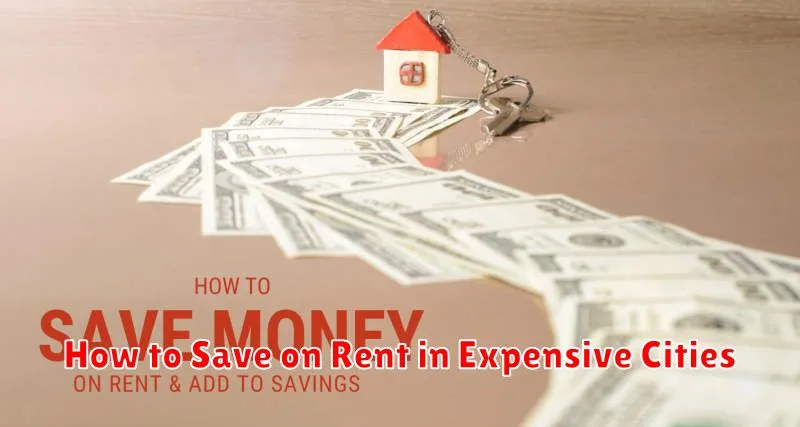For many, buying a first home represents the quintessential American dream – a tangible symbol of stability, independence, and a place to truly call your own. However, the path to homeownership can often feel daunting, fraught with complex financial jargon, unexpected costs, and the sheer magnitude of the investment. It’s a journey where careful budgeting isn’t just a suggestion; it’s an absolute necessity.
The good news? With strategic planning and smart financial habits, that dream can become a reality without breaking the bank. This comprehensive guide, inspired by the detailed insights you’d find on Investopedia, breaks down 10 essential budget hacks that every first-time homebuyer should master. By understanding and implementing these strategies, you’ll navigate the buying process with confidence, secure a home that fits your financial comfort zone, and lay a solid foundation for your long-term financial health.
1. Hyper-Targeted Savings Strategy: Beyond Just "Saving Up"
One of the biggest hurdles for first-time homebuyers is accumulating enough for the down payment and closing costs. While "saving money" sounds simple, a hyper-targeted approach makes it achievable and less stressful.
Why it’s a Budget Hack: A clear, aggressive savings plan ensures you reach your financial goals faster and prevents you from dipping into funds intended for other purposes. It also helps you understand the true cost of your home upfront, preventing future financial strain.
How to Implement:
- Define Your Goal: Calculate your target down payment (typically 3-20% of the home price) and estimate closing costs (usually 2-5% of the loan amount). Add a buffer for unexpected expenses.
- Create a Dedicated "Home Fund": Open a separate, high-yield savings account specifically for your home purchase. This psychological barrier helps prevent impulse spending.
- Automate Transfers: Set up automatic weekly or bi-weekly transfers from your checking account to your home fund. Treat this transfer like a non-negotiable bill.
- Track Every Dollar: Use budgeting apps or spreadsheets to monitor your income and expenses rigorously. Identify areas where you can cut back and redirect those savings to your home fund.
- Prioritize Windfalls: Direct any bonuses, tax refunds, or unexpected income straight into your home savings.
Investopedia Insight: While 20% down payment is ideal to avoid Private Mortgage Insurance (PMI) on conventional loans, many first-time buyer programs (like FHA loans) allow for much lower down payments, sometimes as little as 3.5%. Understanding these options can significantly reduce your initial savings goal, but be aware of the trade-offs like PMI.
2. Leverage Pre-Approval as a Financial Shield, Not Just a Green Light
Getting pre-approved for a mortgage is more than just a formality; it’s a powerful budget hack that defines your true affordability and strengthens your position as a buyer.
Why it’s a Budget Hack: A pre-approval letter from a lender specifies the maximum loan amount you qualify for, allowing you to set realistic price limits. It prevents you from falling in love with a home you can’t afford and gives you a clear understanding of your monthly mortgage payments, property taxes, and insurance estimates.
How to Implement:
- Do It Early: Begin the pre-approval process before you start seriously looking at homes.
- Understand the Numbers: Don’t just look at the maximum loan amount. Work with your lender to determine a comfortable monthly payment, considering all your other expenses.
- Strengthen Your Offer: A pre-approval letter shows sellers you’re a serious, qualified buyer, giving you an edge in competitive markets. It also helps speed up the closing process.
- Shop Around for Lenders: Obtain pre-approvals from multiple lenders. This allows you to compare interest rates, fees, and terms, potentially saving you thousands over the life of the loan.
Investopedia Insight: Differentiate between "pre-qualification" (a basic estimate based on self-reported info) and "pre-approval" (a more rigorous process involving income and credit verification). Always aim for a full pre-approval for the most accurate budget and strongest buyer position.
3. Master the "All-In" Cost of Homeownership: Beyond the Mortgage Payment
Many first-time buyers focus solely on the principal and interest payment of their mortgage. However, true homeownership costs extend far beyond that. Neglecting these "hidden" expenses can quickly derail your budget.
Why it’s a Budget Hack: A comprehensive understanding of all potential costs allows you to budget accurately and avoid unpleasant financial surprises post-purchase.
How to Implement:
-
PITI-Plus: Understand your PITI (Principal, Interest, Taxes, Insurance) payment, but then factor in additional costs:
- Closing Costs: These can range from 2-5% of the loan amount and include origination fees, appraisal fees, title insurance, recording fees, and attorney fees.
- Home Inspection & Appraisal Fees: Essential upfront costs that protect your investment.
- Homeowners Association (HOA) Fees: If applicable, these monthly or annual fees cover community amenities and maintenance.
- Utilities: Factor in higher potential costs for electricity, gas, water, and internet for a larger space.
- Maintenance & Repairs: A good rule of thumb is to budget 1-3% of the home’s value annually for maintenance.
- Moving Costs: Don’t forget professional movers, packing supplies, or rental truck fees.
- New Furnishings/Appliances: You might need to buy new items to fill your new space.
-
Create a Realistic Post-Purchase Budget: Factor all these items into your monthly budget before you commit to a home.
Investopedia Insight: Many closing costs can be negotiated or potentially covered by the seller through "seller concessions," especially in a buyer’s market. Your real estate agent and lender can guide you on what’s customary in your area.
4. Optimize Your Credit Score for Lower Interest Rates
Your credit score is arguably the most powerful tool in your homebuying arsenal. A higher score directly translates to a lower interest rate on your mortgage, saving you tens of thousands of dollars over the life of the loan.
Why it’s a Budget Hack: Even a slight improvement in your credit score can drop your interest rate by a quarter or half a percentage point, leading to significant long-term savings.
How to Implement:
- Get Your Free Credit Reports: Obtain reports from Equifax, Experian, and TransUnion via AnnualCreditReport.com. Review them for errors or discrepancies.
- Dispute Any Errors: If you find mistakes, dispute them immediately. Correcting errors can quickly boost your score.
- Pay Bills on Time, Every Time: Payment history is the biggest factor in your credit score. Set up auto-pay for all your bills.
- Reduce Credit Utilization: Keep your credit card balances low, ideally below 30% of your available credit. This shows lenders you’re not over-reliant on credit.
- Avoid New Debt: Resist opening new credit cards or taking out personal loans in the months leading up to and during your home purchase. New credit inquiries and increased debt can negatively impact your score.
Investopedia Insight: Lenders often look for FICO scores of 740 or higher to offer the best interest rates. While you can still get a mortgage with a lower score, the interest rate will be higher, making your home more expensive over time.
5. Aggressively Reduce Existing Debt (Especially High-Interest Debt)
Beyond just optimizing your credit score, actively reducing your existing debt is a critical budget hack that improves your debt-to-income (DTI) ratio and frees up cash flow.
Why it’s a Budget Hack: Lenders use your DTI ratio to assess your ability to manage monthly payments. A lower DTI indicates less financial risk, making you a more attractive borrower and potentially qualifying you for better loan terms. Additionally, eliminating high-interest debt frees up more of your income for your mortgage and home-related expenses.
How to Implement:
- Prioritize High-Interest Debt: Focus on paying down credit cards, personal loans, or auto loans with the highest interest rates first. This is often referred to as the "debt avalanche" method.
- Avoid New Debt: As mentioned before, do not take on any new debt (car loans, credit card balances, personal loans) during the homebuying process.
- Consolidate if Smart: If you have multiple high-interest debts, consider a debt consolidation loan with a lower interest rate. Caution: Only do this if you can secure a significantly lower rate and are disciplined enough to not accrue new debt.
- Boost Payments: If possible, make extra payments on your principal for any existing loans to reduce the total amount owed faster.
Investopedia Insight: Most lenders prefer a DTI ratio of 36% or less, though some programs allow up to 43-50%. Your DTI is calculated by dividing your total monthly debt payments (including your estimated new mortgage payment) by your gross monthly income.
6. Conduct a Ruthless Personal Budget Audit
Before you even think about looking at homes, conduct a deep dive into your current spending habits. This often overlooked step can uncover significant savings that can be redirected to your home fund.
Why it’s a Budget Hack: You can’t effectively save or budget for a home if you don’t know where your money is currently going. A thorough audit reveals unnecessary expenses and allows you to reallocate funds strategically.
How to Implement:
- Track Everything for a Month: Use an app (like Mint, YNAB) or a simple spreadsheet to meticulously track every dollar you spend for at least 30 days.
- Categorize Your Spending: Group expenses into categories like housing, food, transportation, entertainment, subscriptions, etc.
- Identify "Wants" vs. "Needs": Be honest with yourself. Which expenses are essential, and which are discretionary?
- Cut the Fat:
- Cancel unused subscriptions (gym memberships, streaming services).
- Reduce dining out or costly takeout.
- Find cheaper alternatives for everyday items.
- Limit impulse purchases.
- Consider a "no-spend" challenge for a week or month.
- Negotiate Bills: Call your internet, cable, and insurance providers to see if you can get better rates.
Investopedia Insight: Many financial experts advocate for a "zero-based budget" where every dollar is assigned a job (saving, spending, debt repayment). This ensures no money is wasted and all funds contribute to your financial goals.
7. Explore Down Payment Assistance Programs (DPAs)
Many first-time homebuyers miss out on valuable assistance programs designed to make homeownership more accessible. These programs can significantly reduce the upfront cash you need.
Why it’s a Budget Hack: DPAs can provide grants, low-interest loans, or second mortgages that help cover your down payment and/or closing costs, effectively reducing your out-of-pocket expenses.
How to Implement:
- Research State and Local Programs: Most states and many cities/counties offer programs for first-time buyers, often with specific income or purchase price limits.
- Look for Federal Grants: While less common for direct down payment assistance, some federal programs or grants can indirectly help.
- Check with Your Employer: Some employers offer housing assistance programs as a benefit.
- Connect with a Knowledgeable Lender: A mortgage lender specializing in first-time buyer programs will be your best resource for identifying eligible DPAs in your area.
- Understand the Terms: Some DPAs are grants (free money), while others are silent second mortgages that may need to be repaid upon sale or refinancing, or have deferred payment schedules.
Investopedia Insight: Be aware that DPA programs often have specific eligibility requirements, such as income limits, credit score minimums, and even requirements for the type of home you purchase. Research thoroughly to see if you qualify.
8. Negotiate Like a Pro (Beyond Just the Purchase Price)
The negotiation phase of buying a home isn’t just about the asking price. Savvy first-time buyers can leverage negotiations to save thousands on closing costs, repairs, and other expenses.
Why it’s a Budget Hack: Every dollar saved in negotiation is a dollar that stays in your pocket, either reducing your loan amount or preserving your emergency fund.
How to Implement:
- Don’t Be Afraid to Make an Offer Below Asking: Especially in a buyer’s market or if the home has been on the market for a while, a lower offer is often expected.
- Ask for Seller Concessions: Request that the seller contribute to your closing costs. This is a common negotiation tactic, often capped at 2-6% of the loan amount depending on your loan type.
- Negotiate for Repairs: Based on your home inspection report, ask the seller to address critical repairs or provide a credit at closing for you to handle them after moving in.
- Include Contingencies: Use contingencies (e.g., financing, inspection, appraisal) to protect yourself financially. If the appraisal comes in low, you might renegotiate the price or back out.
- Leverage Your Agent: A skilled real estate agent is your greatest asset in negotiations. They know local market conditions and how to craft compelling offers.
Investopedia Insight: Seller concessions are a powerful tool to reduce your upfront cash outlay. For example, if a seller agrees to a 3% concession on a $300,000 home, that’s $9,000 off your closing costs.
9. Build a Robust Post-Purchase Emergency Fund
The excitement of buying a home can sometimes overshadow the need for a financial safety net after the purchase. Homes, especially older ones, are prone to unexpected issues.
Why it’s a Budget Hack: An emergency fund specifically for home-related issues prevents you from going into debt when the furnace breaks, the roof leaks, or an appliance gives out. This protects your financial stability and your new investment.
How to Implement:
- Start Saving Early: Ideally, begin building this fund alongside your down payment savings, or prioritize it immediately after closing.
- Target 3-6 Months of Home Expenses: Aim to save enough to cover 3-6 months of your new total home-related expenses (mortgage, utilities, HOA, maintenance).
- Keep it Separate and Accessible: Store this fund in a separate, easily accessible savings account, not tied to your daily spending.
- Prioritize Repairs: When an issue arises, use this fund instead of credit cards or dipping into other savings.
Investopedia Insight: Many homeowners underestimate the cost of major repairs. Replacing a roof can cost $5,000-$15,000, and a new HVAC system can be $4,000-$10,000. Having a dedicated fund prevents these events from becoming financial crises.
10. Resist Lifestyle Creep After Buying Your Home
You’ve got the keys, the boxes are unpacked, and you’re finally a homeowner! The temptation to immediately furnish every room, undertake major renovations, or upgrade your lifestyle can be strong. This is where "lifestyle creep" can quickly undermine your hard-won financial stability.
Why it’s a Budget Hack: Avoiding lifestyle creep ensures you remain financially comfortable and capable of handling homeownership responsibilities without accumulating new, unnecessary debt. It allows you to continue saving and investing.
How to Implement:
- Stick to Your Budget: Don’t let the excitement of a new home push you beyond the budget you so carefully crafted.
- Prioritize Needs Over Wants: Focus on essential furnishings and repairs first. You don’t need to buy all new furniture at once.
- Delay Major Renovations: Live in your home for a while to understand its quirks and your true needs before embarking on costly renovations. Save up cash for these projects rather than taking out new loans.
- Continue Saving: Maintain your saving habits for your emergency fund, future home improvements, and other financial goals.
- Avoid New Debt: Be extremely cautious about taking on new car loans, credit card debt for furniture, or personal loans immediately after buying your home.
Investopedia Insight: Lifestyle creep is a common phenomenon where increased income or a major life event (like buying a home) leads to an increase in discretionary spending. Financial discipline is key to preventing this, ensuring your new home remains an asset, not a source of financial stress.
Conclusion: Your Smart Start to Homeownership
Buying your first home is a monumental achievement, but it’s also one of the biggest financial commitments you’ll ever make. By embracing these 10 budget hacks, you’re not just saving money; you’re building a foundation of financial literacy and discipline that will serve you well throughout your homeownership journey and beyond.
From meticulous savings and credit optimization to smart negotiation and post-purchase financial planning, each hack empowers you to make informed decisions and secure a home that brings joy, not financial strain. Start implementing these strategies today, and step confidently onto the path of affordable and sustainable homeownership.



